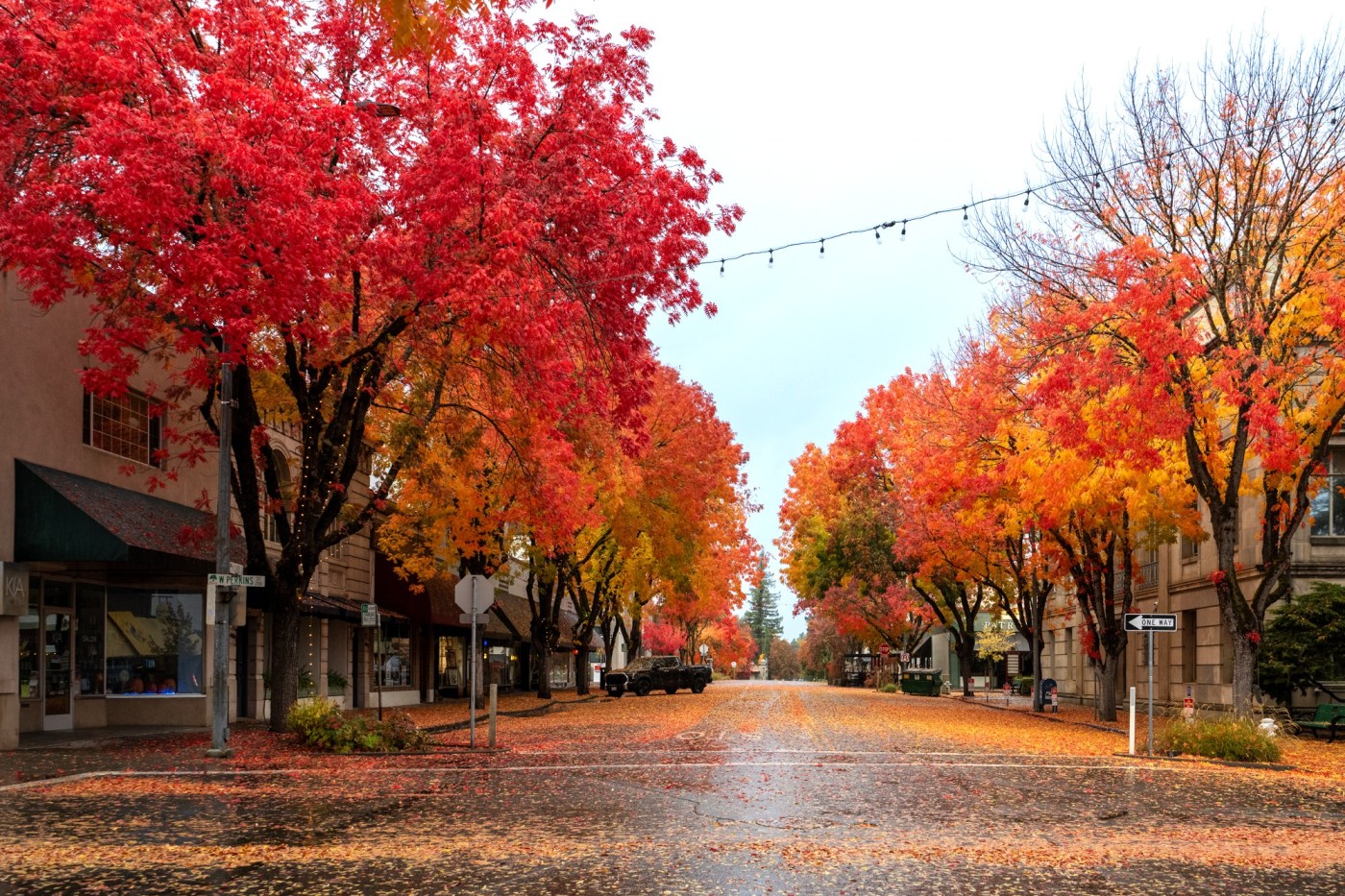A recent online petition has sparked community concern over the potential removal of iconic Chinese Pistache trees along School Street in Ukiah, California. Launched by local resident Dennis O’Brien, the petition has garnered approximately 2,300 signatures as of Friday. It claims that a proposed downtown improvement project could lead to the removal of these trees, which have provided shade and beauty for over six decades.
While the petition has raised alarm, city officials have stated that there are no immediate plans to cut down the trees. Shannon Riley, Assistant City Manager, emphasized on Friday that the city has not allocated funding for any such project that would necessitate the removal of the trees. “There is no money available to begin a project,” Riley stated, clarifying that the discussions surrounding the trees are part of a broader long-term planning effort.
The proposed downtown improvement project aims to address several issues, including the replacement of aging sidewalks and infrastructure. According to Riley, the roots of the existing trees have wrapped around city water lines and are damaging the foundations of nearby buildings. This has led to buckling sidewalks and other structural concerns.
“Is tree replacement one of the options being evaluated? Of course,” Riley noted. The city is currently undergoing a year-long planning study to explore various aspects of the downtown area, which includes potential changes to traffic flow and the installation of new sidewalks.
Riley pointed out that the city has been transparent about the planning process, having held two community meetings with another scheduled for December 11 at the Ukiah Conference Center. “This project has been very widely publicized and has been going on for a year,” she explained. The city has conducted workshops, walking tours with engineers, and interviews with local business owners, aiming to engage the community in the planning process.
Local resident Cassie Taaning expressed her initial frustration upon hearing about the possible removal of the trees. However, she later found that the trees, while beautiful, pose challenges for urban infrastructure. “The trees were planted 60 years ago, and they live about 150 years. The species is way too big for sidewalk urban use,” she commented. Taaning noted that the tree roots have caused dangerous conditions on the sidewalks, which require regular maintenance.
Riley acknowledged the community’s love for the existing trees but reiterated the need for infrastructure improvements. She outlined concerns from residents and businesses, highlighting that the current sidewalks are not level and that the underground utilities are being compromised by the tree roots.
“Every tree has a lifespan, and the Downtown Streetscape has shown us that trees planted in ideal environments can thrive without destroying their surroundings,” Riley said. She cited examples of newly planted trees in the downtown area that have already grown taller than surrounding buildings.
As the community continues to discuss the future of School Street, officials are gathering feedback to ensure that any plans reflect the desires of local residents. The upcoming community meeting on December 11 is seen as a critical opportunity for residents to voice their opinions and learn more about the potential changes.
Riley concluded by emphasizing that the city is dedicated to preserving the character of School Street while also addressing necessary upgrades to infrastructure. The planning process aims to balance the community’s affection for its trees with the practical needs of a growing urban environment.







